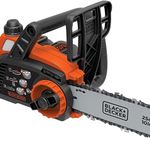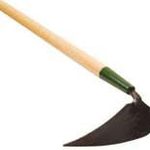
Mesh bags for winter storage – Winning Tip
Every autumn, despite having saved mesh bags from my purchases of onions, bulbs, and the like, I find myself searching for additional mesh bags in which to store bulbs, bulblets, and rhizomes for the winter. In the midst of my search this year, I spied an old shower puff in the laundry room. Bingo! After snipping the rubber band bunching the netting together, I had almost 3 yards of a tube of netting measuring 12 inches wide. I cut it into squares of 12 inches and stapled one end of each length together securely. I now have a dozen bags.
—Beth Cammarata, Schenectady, New York
Pruning hedges to a uniform height
Pruning an out-of-bounds deciduous hedge can be daunting, especially when you’re trying to get a perfectly even top at a newly shortened height. If the hedge is adjacent to a structure, I use duct tape to fasten jute twine on the building at the new desired top height and then use that as my visual pruning guideline. It’s especially easy to find a uniform height with brick or horizontal siding.
Judging a uniform top height gets trickier if the hedge is freestanding, however, and particularly if the ground slopes. In such cases I use tall, heavy-duty garden stakes as the end points for my twine. I rest a carpenter’s level on the taut twine, adjusting one end or the other until the taut twine shows a level reading. Then I begin pruning.
These two methods have enabled me to produce consistently uniform tops to hedges during my annual maintenance pruning, and even to hedges that were wildly overgrown.
—Tony Fulmer, Arlington Heights, Illinois
Handy plant supports
Following a local election, I repurposed a discarded holder for a campaign yard sign into a sturdy plant stake. Searching for a more available way to achieve the same thing led me to the concrete section of a home improvement store, where I bought 10-foot galvanized-steel masonry ladders. With a hack saw, I scored the steel lengthwise to create “legs,” which then easily snapped off into three sections, each about the same length as a campaign-sign holder. Useful in propping up a multitude of things in the garden, they have become some of my favorite garden stakes. If some plants—garden mums, for example—need additional support, I can just tie string horizontally from one leg to another at different heights.
—Esther Davis, Salem, Virginia
Get control over those plant stakes
I was constantly frustrated when I needed to wrangle together my plant stakes. To bring some order to this mess, I cut the bottoms out of some heavyweight nursery pots, drilled a few holes in the side, and attached them with wire to a fence. The bottomless pots keep the stakes in place with little effort on my part.
—Lori Walsh, Rockford, Illinois
Don’t leave biennials in pots over winter
When I lived in southeastern Pennsylvania I learned not to overwinter biennial greens in pots. They withstood freezing temperatures, but when rain fell on the frozen soil, it puddled on the surface, unable to drain away. Later freezes turned the puddles into blocks of ice, sealing the plants’ coffins.
—Mary Crum, Fort Myers, Florida
From Fine Gardening #210
We need your gardening tips!
If you have a gardening tip, send it to fg@taunton.com. We pay $25 for each tip we publish. The prize for the winning tip is a one-year subscription to Fine Gardening.
Fine Gardening Recommended Products

BLACK+DECKER 20V MAX* Cordless Chainsaw, 10-Inch, Tool Only (LCS1020B)
Fine Gardening receives a commission for items purchased through links on this site, including Amazon Associates and other affiliate advertising programs.

Plant Covers Freeze Protection 10 ft x 30 ft Floating Row Cover 0.9oz/yd²
Fine Gardening receives a commission for items purchased through links on this site, including Amazon Associates and other affiliate advertising programs.

Long Handle EZ-Digger
Fine Gardening receives a commission for items purchased through links on this site, including Amazon Associates and other affiliate advertising programs.


















Comments
Log in or create an account to post a comment.
Sign up Log in